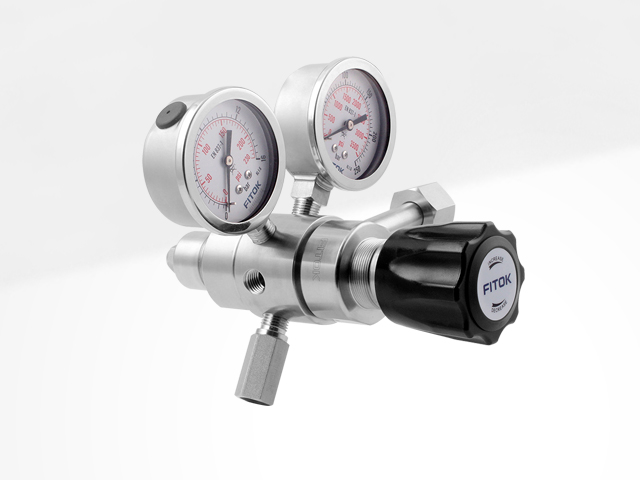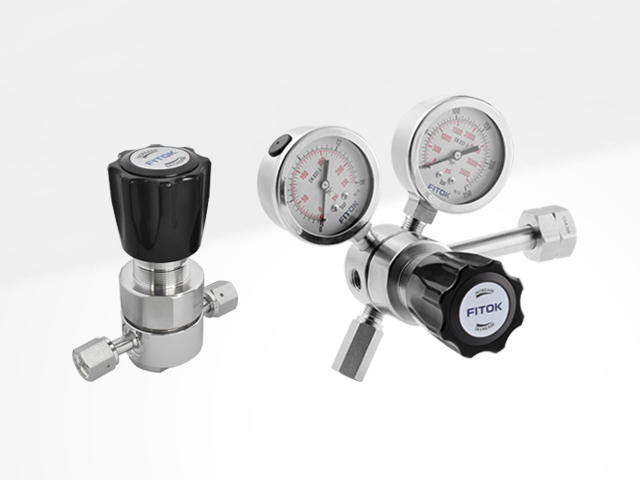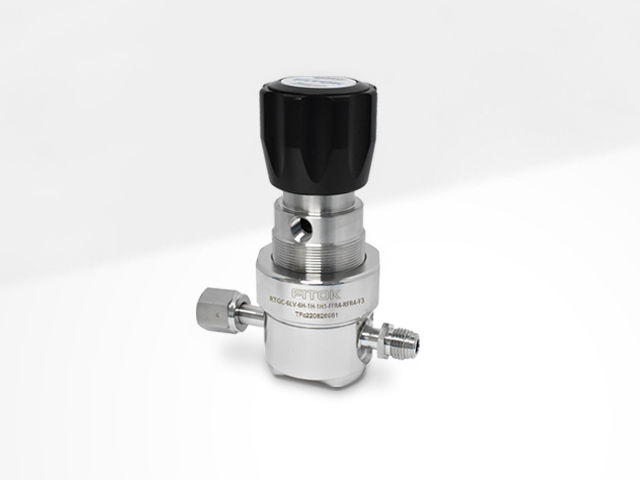Pressure Regulator Explained (Ⅳ) : Introduction to Regulators' Venting Features

Regulators are devices that reduce inlet pressure to a desired outlet pressure and work to maintain the outlet pressure despite fluctuations in the inlet pressure. They are widely used in various pipeline systems. The key characteristic of pressure regulators is their ability to reduce inlet pressure to a lower outlet pressure during media flow. However, when the pipeline downstream of a regulator is closed, how does the regulator reduce the outlet pressure to a new set point? Additionally, if a sensing mechanism seal fails (for instance, diaphragm rupture or leakage in the seal ring of a piston), how can the leaked media be vented to a designated location? We will explore these questions in this Tech Talk.

Self-Venting
Self-venting is a feature of regulators. By adding a path across the sensing mechanism, the regulator can fully release the outlet pressure in a contained system through the self-venting mechanism when the handle is turned counterclockwise (DECREASE). This eliminates the need for an additional purge or bleed valve. Regulators with high working pressures often come with a self-venting feature for customers to choose from.
For non-self-venting regulators, a valve with a vent function should be installed near the regulator outlet if the automatic release of excess outlet pressure is needed when the downstream pipeline is closed. This helps protect precision components downstream from high pressure when the pipeline is open. Compared to non-self-venting regulators, self-venting regulators can enhance the overall performance of valves and improve pipeline safety in specific situations.
Self-Venting Principle
When self-venting is not required, the vent seat contacts the vent rod, forming a seal. In this sealed state, the outlet pressure does not vent through the vent seat. When excess outlet pressure needs to be released, turn the handle counterclockwise (DECREASE) to reduce the loading force from the range spring. At this point, the force exerted on the piston by the outlet pressure exceeds the loading force, causing the piston to move upward. As the piston rises, the vent rod gradually detaches from the vent seat due to its limit structure. This allows the outlet pressure to vent to the atmosphere (Fig. 1).

Fig. 1 Self-Venting of Pressure Regulators
Cautions for Self-Venting
1. Avoid use with flammable, combustible, toxic, hazardous, and corrosive media as self-venting will release media with excess outlet pressure to the atmosphere. If you require a self-venting feature for hazardous media, please contact FITOK or our authorized distributors.
2. Do not use with high purity media as it can allow impurities from the atmosphere to enter the system.
3. Since the self-venting configuration features an additional seal, considerations should be given to material compatibility, such as the seat material at the seal. Please refer to the FITOK Material Compatibility Guide.

Captured Vent Port
Captured vent ports are also a feature of regulators. By configuring a port to the bonnet (e.g., the 1/16-27 NPT port on the RTGC series or the 1/16-27 NPT port on the RDGC series), leaked media can be vented to a designated location when the sensing mechanism seal fails. In certain designs, media with excess outlet pressure that would be vented through self-venting can also be vented through a captured vent port. Regulators designed for high purity applications usually feature a captured vent port, enhancing operational safety in specific situations compared to those without a captured vent port.

Venting Configurations
Captured vent ports are generally determined at the construction design stage, while self-venting can be opted for at the valve selection stage. Table 1 lists different combinations of self-venting and captured vent ports based on valve configurations. Figure 2 shows the structural comparison between non-self-venting and self-venting features.
Table 1 Combinations of Self-Venting and Captured Vent Ports
| Self-Venting | Captured Vent Port | Description |
| Yes | Yes | With specific designs, vent the leakage and excess outlet pressure to a designated location |
| Yes | No | With specific designs, vent excess outlet pressure to the atmosphere |
| No | Yes | With specific designs, vent the leakage to a designated location when the sensing mechanism seal fails |
| No | No | Unable to vent the leakage and excess outlet pressure to a designated area. Solutions are required at the pipeline design stage. |
For applications involving flammable, explosive, toxic, harmful, or corrosive media, please contact FITOK or our authorized distributors for professional advice on venting configurations.

Fig. 2 Self-Venting Feature
Related Articles:







.jpg)
.jpg)
 Back
Back 

